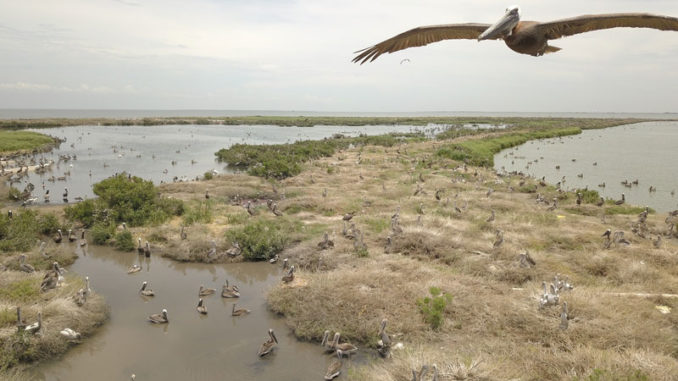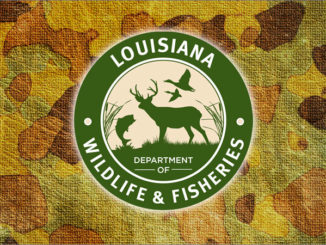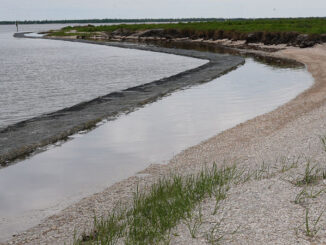
The Louisiana Wildlife and Fisheries Commission (LWFC) approved a resolution that converts Queen Bess Island to a Louisiana state wildlife refuge during its November meeting Thursday, Nov. 7, in Baton Rouge. The designation means the Louisiana Department of Wildlife and Fisheries (LDWF) will be able to offer enhanced protection to the island, a vital colonial waterbird colony annually producing more than 4,400 nests.
Queen Bess Island is a 37-acre island located near Grand Isle in Jefferson Parish. It is the fourth largest brown pelican rookery in Louisiana, producing 15-20 percent of the state’s nesting activity. It is also nesting habitat for about 10 species of nesting colonial water birds, such as tri-colored herons, great egrets and royal terns.
“It’s so important that we protect, as best we can, the natural resources of our state,’’ Gov. John Bel Edwards said. “Designating Queen Bess Island as a state wildlife refuge will allow us to further safeguard this bird haven as we work to improve it and restore nesting acreage.’’
Restoring nesting habitat
Queen Bess Island is currently undergoing a project that will restore approximately 30 acres of brown pelican and wading bird nesting habitat and seven acres of tern and black skimmer nesting habitat. LDWF and the Louisiana Coastal Protection and Restoration Authority (CPRA) are jointly implementing the project.
Funding for the project comes from the Deepwater Horizon oil spill Natural Resource Damages Assessment (NRDA) settlement administered by the Louisiana Trustee Implementation Group. The project began earlier this fall and should be completed by the middle of February 2020.
The island, which is battling land loss from subsidence and erosion from over wash, currently has about only five acres of nesting habitat available.
“We don’t have the nesting capacity for brown pelicans and other waterbirds that we once did in this part of the state,’’ LDWF Secretary Jack Montoucet said. “That’s why the restoration work on Queen Bess is essential in providing as much nesting habitat as possible. The designation of Queen Bess Island as a state wildlife refuge means that we’ll be able to care for this additional habitat for years to come.’’
Brown pelicans
Queen Bess Island has historical significance for the brown pelican in Louisiana. Brown pelicans ceased nesting in the state in 1961 and by 1963 had virtually disappeared from Louisiana’s coastal wetlands primarily because of the now-banned pesticide DDT. In 1968, LDWF began a restoration project of the species with Queen Bess as ground zero.
From 1968 through 1976, brown pelican chicks were captured from Florida and relocated to coastal Louisiana, including Queen Bess. In 1971, 11 nests were documented on the tiny island, marking the first successful recolonization of brown pelicans in Louisiana.
The current project will enhance the existing rock ring around the island, which will serve as containment for the sand fill material that will increase the island’s elevation. The island will be sloped with the highest elevation at the southwest end and the lowest at the northeast.
Once the material in the lower elevation eastern area of the island has settled, it will be planted with a variety of native plants. The middle elevations will be planted with scrub-shrub vegetation that is useful for nesting. Bird ramps will be placed around the island to provide flightless juvenile birds with safe and easy access to the water.
On the southwestern side of the island, a set of rock breakwaters will be placed just offshore. This feature will create a lagoon style nursery feature without harsh wave energy for the young birds to learn how to swim, preen and feed.
For video and photos of Queen Bess, go to https://ldwf.canto.com/v/QueenBessIsland/landing?viewIndex=0


